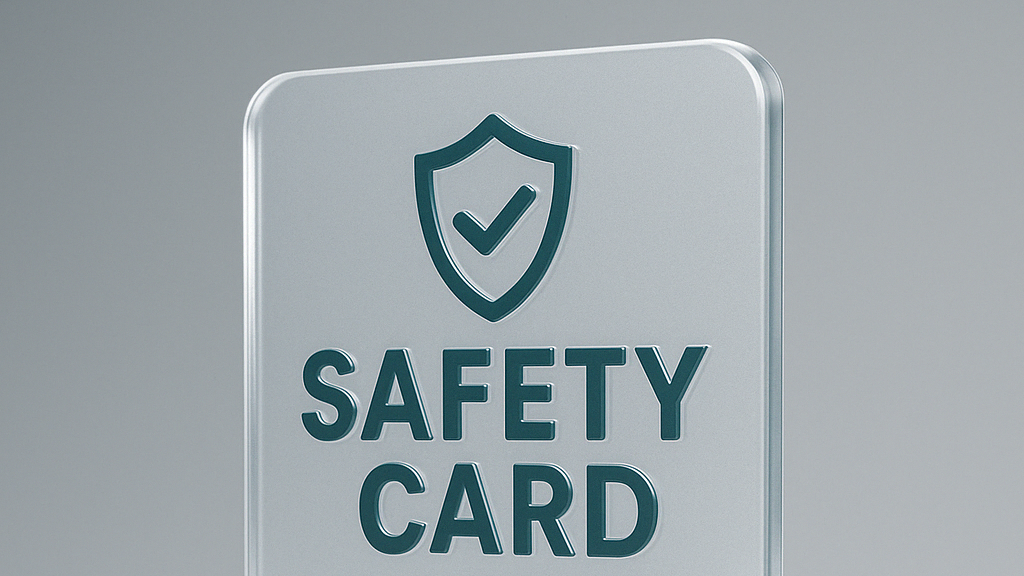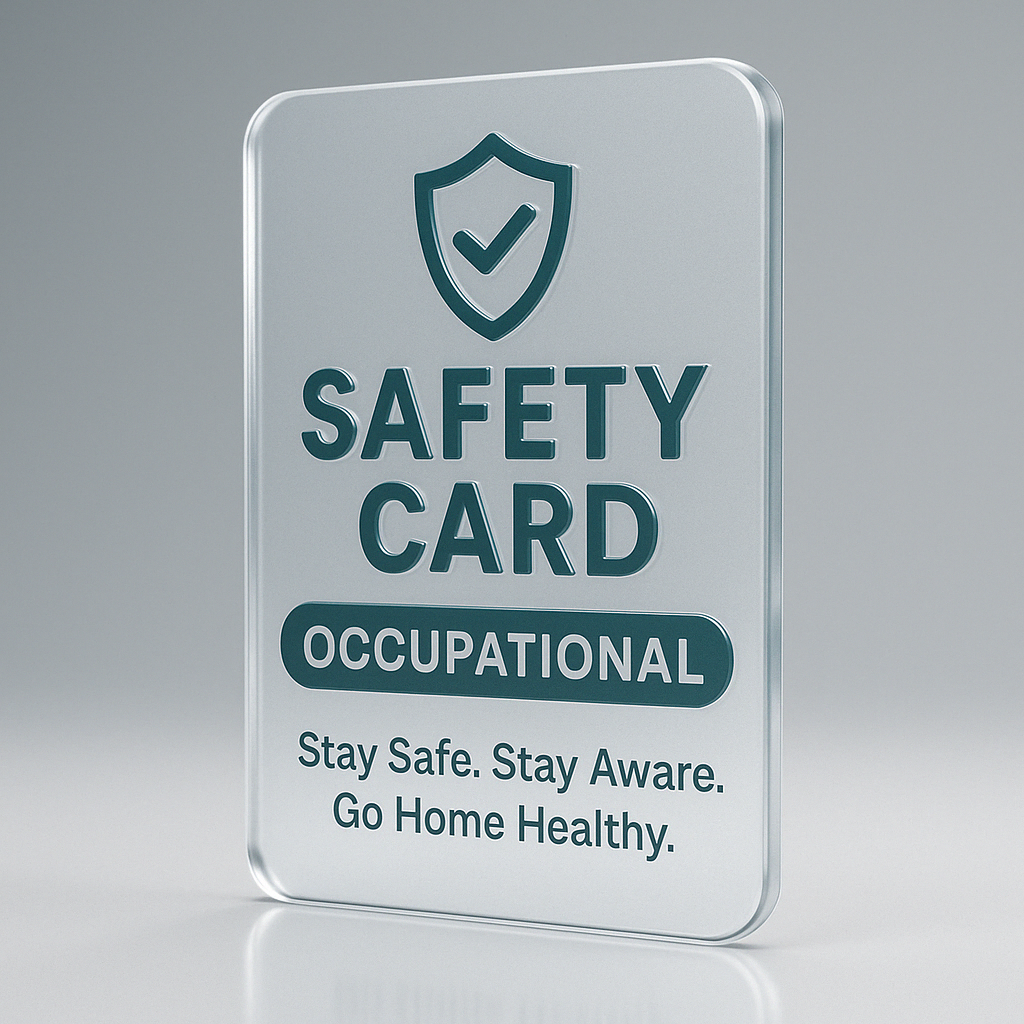- Why Occupational Safety Cards Matter
- What’s Included in a Good Occupational Safety Card?
- Focus on Key Safety Areas
- Benefits of Occupational Safety Cards
- How to Distribute and Use Safety Cards
- Real-Life Use Case: Construction Industry
- Going Digital: Smart Safety Cards
- Trusted External Resources
- Final Thoughts
Occupational Safety Card
Occupational Safety Cards are more than just laminated pieces of paper—they are compact lifesavers that promote daily safety awareness in the workplace.
Whether you’re working on a construction site, in a chemical lab, or a busy warehouse, having an occupational safety card on hand can be the difference between quick action and confusion during emergencies.
Why Occupational Safety Cards Matter
At the beginning of every workday, safety should be the first thought—not an afterthought. Occupational Safety Cards provide immediate access to vital safety procedures, emergency contact information, and reminders on best practices.
These cards condense essential Occupational Health and Safety (OHS) information into a handy format that fits into pockets, lanyards, or toolkits.
Their simplicity and accessibility make them ideal tools in reinforcing a safety-first culture.
What’s Included in a Good Occupational Safety Card?
A well-designed occupational safety card should include clear, concise, and easy-to-read information. Here’s what typically appears on an effective card:
- Top Safety Reminders (like PPE use, hazard awareness)
- Emergency Procedures (fire, injury, chemical spill protocols)
- First Aid & Supervisor Contact Details
- Quick Tips for Everyday Safety
- Company Information or Safety Officer Contact
These elements ensure that no matter the scenario, the worker has clear guidance at their fingertips.
Focus on Key Safety Areas
Daily Safety Reminders
Including reminders like “Inspect tools before use” or “Know your muster point” ensures that core safety habits are reinforced consistently. These small cues help prevent complacency and foster ongoing awareness.
Emergency Procedures
Every second counts during an emergency. Occupational safety cards should outline step-by-step responses to incidents such as fires, chemical spills, or on-site injuries.
Contact Information
Quick access to emergency contacts such as First Aiders, site supervisors, or the health and safety office can make response times faster and more efficient.

Benefits of Occupational Safety Cards
Occupational Safety Cards offer several key advantages:
1. Enhanced Safety Compliance
By placing critical safety information in the hands of every employee, companies can better meet regulatory standards like those set by CCOHS or OSHA. This proactive approach supports ongoing compliance.
2. Improved Emergency Response
Quick action during a crisis can save lives. With instructions and contact details readily available, workers are more likely to respond effectively to emergencies.
3. Portable and Cost-Effective
Unlike posters or training manuals, safety cards are small, portable, and inexpensive to print. They can be reissued during safety refreshers or updated easily when protocols change.
4. Customization for Work Environments
From construction to healthcare, cards can be tailored with industry-specific information, such as hazard symbols for chemicals or equipment shutdown procedures.
How to Distribute and Use Safety Cards
Distributing occupational safety cards can be part of new hire onboarding or safety refreshers. Here are some practical ways to implement them:
- Attach to lanyards or ID badges
- Include in PPE kits
- Distribute during toolbox talks
- Post as laminated mini-posters at workstations
Supervisors should periodically check that employees carry their cards and understand the information presented.
Real-Life Use Case: Construction Industry
In high-risk environments like construction zones, Occupational Safety Cards play a vital role. Workers are constantly exposed to potential hazards like falling objects, electrical tools, and moving vehicles.
A sample safety card for construction might include:
- PPE requirements (hard hat, steel-toe boots)
- Trenching collapse prevention
- Fall arrest reminders
- Emergency evacuation routes
By simplifying complex procedures into checklist-style guidance, these cards make it easy for construction workers to stay safe and compliant.
Going Digital: Smart Safety Cards
With technology becoming increasingly integrated into workplace safety, digital safety cards are also emerging. These can be accessed via QR codes, apps, or digital wallets. They may include:
- Animated safety videos
- Instant contact buttons
- Geo-location alerts
- Interactive hazard maps
However, printed cards still have the advantage of being accessible offline—a crucial benefit in areas with limited connectivity or during power failures.
Trusted External Resources
For safety regulations and printable safety guides, check out:
- WorkSafeBC – Excellent for British Columbia safety standards.
- OHSE.ca – Articles and updates on Canadian occupational health.
- Safe Work Australia – Safety card templates and guidelines for Australian industries.
All links above are DoFollow to help you explore further.

Final Thoughts
Occupational Safety Cards are a simple but powerful way to promote health and safety at the ground level. Their portability, ease of use, and life-saving information make them an essential part of any workplace safety toolkit.
Whether you’re in construction, manufacturing, or health services, make sure your team is equipped with the right information—right in their pocket.
Investing in Occupational Safety Cards means investing in your workers’ lives.


No comments yet